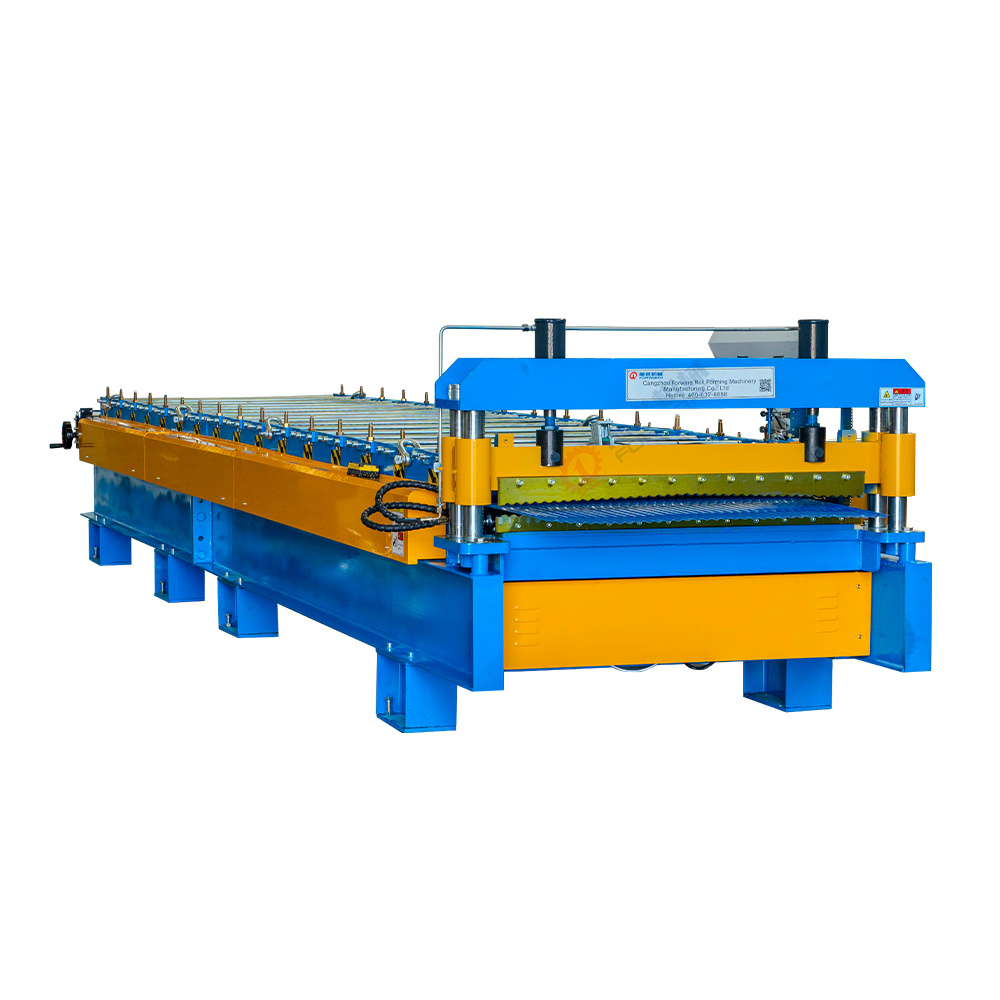Transforming Design: How Light Gauge Steel Roll Forming Machines Revolutionize Construction

Transforming Design: How Light Gauge Steel Roll Forming Machines Revolutionize Construction
Table of Contents
- Introduction to Light Gauge Steel Roll Forming Machines
- What is Light Gauge Steel?
- Understanding the Working Principle of Roll Forming Machines
- Benefits of Light Gauge Steel in Construction
- Applications of Light Gauge Steel Roll Forming Machines in Construction
- Design Flexibility and Aesthetic Value
- Sustainability and Efficiency in Construction
- The Future of Roll Forming Technology
- Frequently Asked Questions
- Conclusion
Introduction to Light Gauge Steel Roll Forming Machines
In the ever-evolving landscape of construction, **light gauge steel roll forming machines** stand out as a transformative technology. These machines play a critical role in shaping the future of construction by enhancing speed, precision, and versatility. As we explore the depth of their impact, we will uncover how they facilitate innovative designs and improve overall building efficiency.
What is Light Gauge Steel?
Light gauge steel is a type of structural steel that is less than 3 mm thick. It is manufactured in various shapes such as C, Z, and U channels, as well as sheets and plates. The lightweight nature of light gauge steel makes it an ideal choice for modern construction applications where reducing weight without compromising strength is essential. Its high strength-to-weight ratio allows architects and engineers to design buildings that are not only aesthetically pleasing but also structurally sound.
Understanding the Working Principle of Roll Forming Machines
The **roll forming process** involves feeding a continuous strip of light gauge steel through a series of rollers that progressively shape the metal into desired profiles. Each set of rollers bends the steel into increasingly complex shapes, allowing for the production of custom profiles with precision. The process is highly efficient, capable of generating long lengths of finished product with minimal waste.
The key components of a roll forming machine include:
- **Feed Mechanism:** Controls the speed and positioning of the steel strip.
- **Roller Stations:** Multiple rollers are arranged in sequence to gradually shape the steel.
- **Cut-off Mechanism:** Cuts the formed profiles to length once they have been shaped.
The efficiency and precision of this process eliminate many of the inefficiencies associated with traditional construction methods.
Benefits of Light Gauge Steel in Construction
Light gauge steel offers numerous benefits that make it a preferred choice in construction:
1. Lightweight and Durable
The lightweight nature of light gauge steel significantly reduces the overall weight of structures, leading to lower transportation costs and easier handling on-site. Despite its lightness, it possesses remarkable strength and durability, making it resistant to various environmental conditions.
2. Cost-Effective Solution
Utilizing light gauge steel can result in substantial savings. The swift installation process reduces labor costs, and the minimal waste generated during manufacturing contributes to lower overall expenses.
3. Fire Resistance
Steel is inherently non-combustible, providing an added layer of safety to structures. Light gauge steel can withstand extreme temperatures, making it an ideal choice for fire-resistant construction.
4. Design Flexibility
The ability to create custom profiles with light gauge steel allows architects and designers to explore innovative and creative design solutions, enhancing the aesthetic appeal of buildings.
5. Eco-Friendly Material
Steel is fully recyclable, which reduces environmental impact. The use of light gauge steel aligns with sustainable building practices, appealing to eco-conscious builders and developers.
Applications of Light Gauge Steel Roll Forming Machines in Construction
Light gauge steel roll forming machines are versatile and can be utilized in various construction applications, including:
1. Residential Construction
Light gauge steel is increasingly used in residential construction for framing and structural elements, providing a robust framework for homes while maintaining design flexibility.
2. Commercial Buildings
In commercial construction, the strength and lightweight nature of light gauge steel make it ideal for multi-story buildings, providing the necessary support while allowing for expansive open spaces.
3. Modular Construction
The efficiency of roll forming machines is a game-changer in modular construction. Components can be pre-fabricated off-site and assembled quickly, reducing construction time and costs significantly.
4. Industrial Applications
In industrial settings, light gauge steel framing can be used for warehouses and manufacturing facilities, allowing for efficient layouts and modifications.
5. Infrastructure Projects
Light gauge steel can also support infrastructure projects, such as bridges and commercial buildings, where its strength and adaptability are highly valued.
Design Flexibility and Aesthetic Value
One of the most appealing aspects of light gauge steel roll forming machines is their ability to produce customized designs. The intricate profiles created allow architects to realize their vision without excessive limitations. This flexibility opens the door to innovative architectural designs, enabling unique facades, intricate decorative elements, and bespoke features that stand out in the modern skyline.
1. Custom Profiles
With the advanced technology employed in roll forming machines, custom profiles can be designed to meet specific aesthetic and functional requirements, ensuring a perfect fit for any project.
2. Variety of Finishes
Light gauge steel can be finished in various ways, including painting, galvanizing, or powder coating, allowing for additional customization in appearance while enhancing durability and resistance to corrosion.
Sustainability and Efficiency in Construction
The construction industry is gradually leaning towards sustainable practices, and light gauge steel plays a pivotal role in this transition:
1. Reduced Waste
Manufacturing light gauge steel through roll forming produces less waste compared to traditional construction methods. The efficiency of the roll forming process maximizes material usage and minimizes scrap.
2. Lower Carbon Footprint
By using lighter materials and reducing energy consumption during transport and construction, light gauge steel contributes to a lower carbon footprint, aligning with global sustainability goals.
3. Longevity and Maintenance
Buildings constructed with light gauge steel require less maintenance and have a longer lifespan, further supporting sustainable practices through reduced resource consumption over time.
The Future of Roll Forming Technology
As technology advances, the future of light gauge steel roll forming machines looks promising. Innovations in automation, artificial intelligence, and machine learning are set to enhance the efficiency and capabilities of these machines, leading to even greater customization and precision.
Emerging trends may include:
- **Smart Manufacturing:** Implementing IoT technology to streamline production processes and monitor machine performance in real-time.
- **Integration with Building Information Modeling (BIM):** Enhancing collaboration and accuracy in project planning by integrating roll forming processes with BIM software.
- **Sustainable Innovations:** Research into more eco-friendly materials and processes to further enhance the sustainability of light gauge steel construction.
Frequently Asked Questions
1. What are the key advantages of using light gauge steel in construction?
Light gauge steel offers benefits such as lightweight durability, cost-effectiveness, fire resistance, design flexibility, and eco-friendliness, making it an ideal choice for modern construction projects.
2. How does the roll forming process work?
The roll forming process involves feeding a continuous strip of steel through a series of rollers that gradually shape the metal into desired profiles, allowing for precision and efficiency in production.
3. What types of structures can be built using light gauge steel?
Light gauge steel can be used in various structures, including residential homes, commercial buildings, industrial facilities, and modular constructions.
4. Is light gauge steel environmentally friendly?
Yes, light gauge steel is recyclable and generates less waste during the manufacturing process, making it a sustainable building material.
5. What does the future hold for light gauge steel roll forming technology?
Advancements in automation, smart manufacturing, and sustainable practices are expected to enhance the capabilities and efficiency of light gauge steel roll forming machines in the future.
Conclusion
In summary, **light gauge steel roll forming machines** are revolutionizing the construction industry by providing innovative solutions that enhance design flexibility, efficiency, and sustainability. Their ability to produce custom profiles with precision and minimal waste aligns with the growing demand for eco-friendly practices in construction. As technology continues to advance, the potential for light gauge steel in modern construction will only expand, paving the way for a future characterized by innovation and sustainability. The impact of these machines cannot be overstated; they are indeed transforming the very foundation of contemporary construction.
Key words:
Previous Page
Previous Page:
recommend News
Share



